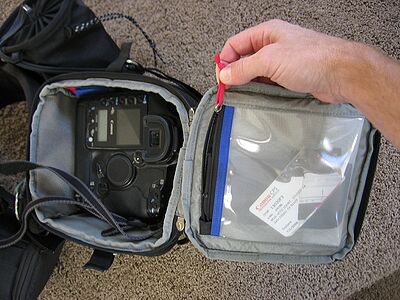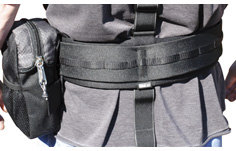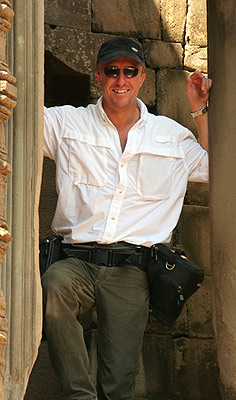RETIRING MY CANON MARK II – REPLACED BY NIKON D3S!!!
I am announcing the retirement of the two Canon Mark II bodies and the 16-35 and 70-200 lenses that have served me so well over the last 6 years. These two workhorses have been the tools which have helped me earn a living. They have been by my side through thick & thin, and then some. I’ve lived with them and enjoyed them as friends. I’ve slept with my head resting on them during train rides across India; I’ve protected them from would-be robbers in Haiti, and hid them under beds in Kabul, Cotabato and Cali. I’ve been tossed out of Cuba with them when I couldn’t convince immigration officials that I was a vacationing tourist who just happened to have worn-looking professional cameras.

My Canons have been locked up with my PackSafe in countless five-dollar-a-night hotels around the globe. I’ve shot them, unprotected, in heavy downpours in East Timor and in the dust storms of Southern Sudan. I’ve made images of Rajasthani rickshaw drivers and watched their eyes light up as I showed them their picture on the screen. I’ve handed them to novice monks in Burma and watched in delight as they discovered, wide-eyed, about the magic of digital photography.

Although I have mishandled them, including one incident when I dropped my 70-200 nine feet down, off of an elephant, and Ken Rockwell’s review of the amazingly undamaged lens, only once did these Cameras ever let me down; that was in Sri Lanka, back in 2006 while shooting one-year anniversary of the Tsunami when a shutter broke.

But alas, technology marches forward in this new age of building faster, lighter, better, sharper cameras every 6months.
In “digital camera years” these Mark II bodies are dinosaurs. In order to serve my clients well, and provide them with the best images I can deliver, it’s time to replace them with upgraded technology. So, I pulled the trigger and ordered two Nikon D3s’s from Adorama…..Nikon you gasp…yep, that’s right, Nikon. After much thought and a thorough analysis of the costs, I have decided to switch back to Nikon. You may remember my story in 2004 when I was robbed of my two trusted D1X’s while in a really bad neighborhood in Lima Peru.

The debate that many photographers have over Nikon vs. Canon has never really interested me, and I’ve always said that which camera you’re using doesn’t make a difference (see my quote in the last paragraph here.
My decision to “upgrade” is based on the improvement in picture quality at high ISO’s which I believe to be the most significant advancement in recent years, and my decision to switch from Canon to Nikon is based mostly on economic reasons….Let me explain: The way I see it, at this time, Nikon offers a full frame pro body with high ISO capability for $5000 while Canon’s full frame Mark IIIs is $6,115 and lacks high the newer, cleaner, high ISO settings. Since I have to buy two bodies, the math is simple. I can get 2 Nikon bodies, the 2 new lenses I need (the17-35 f2.8 and the new 70-200 f2.8), one extra battery and a flash (SB-400) for $14,609, while with Canon, it would cost me $12,229 for 2 full-frame 1Ds Mark III bodies, (old technology with max 1600 ISO), plus another $2499 for the new improved 70-200 2.8, for a total of $14,729. (Replacing the 16-35 F2.8 would add another $1,520, but of course, I could just keep using my existing 16-35, 2.8).
So; soon, I’ll be shooting Nikon again. Frankly, I’m looking forward to something new. Change is good, that’s one of the reasons I love my job so much…whether it’s traveling to a new country, covering a new story or in this case, getting new camera gear; change offers me an opportunity to learn something new.
Sure, I’ll have to get used to lenses that mount and zoom in the reverse direction, and yes, I’ll have to read an owner’s manual the size of an encyclopedia, but hell, why not, I need something to do on my next 16 hour trans-pacific flight.
Perhaps some would say, “but you can get the 5D Mark II for $2,500”…..I know, I know, but I need the toughness of professional bodies which can withstand the rigors and abuse that I will be subjecting them to, as well as ergonomics that don’t allow dials to be accidentally rotated when bumped (this is a problem I see with the command dial on the 5D Mark II). And then there was the option to get the new Canon Mark IV but I really wanted to get back to a full frame, for the little bit of extra wideness rather than stay with the 1.3 crop factor.
So; soon, I’ll be shooting Nikon again. Frankly, I’m looking forward to something new. Change is good, that’s one of the reasons I love my job so much…whether it’s traveling to a new country, covering a new story or in this case, getting new camera gear; change offers me an opportunity to learn something new.
Sure, I’ll have to get used to lenses that mount and zoom in the reverse direction, and yes, I’ll have to read an owner’s manual the size of an encyclopedia, but hell, why not.
My Current Choice for Carrying My Cameras
Until October of 2007 I used a modified version of the Lowepro Street and Field system. Unfortunately; “out of the box, LowePro Street and Field just didn’t seem to work the way I wanted it to. It took me several years to perfect the system. Finally, with the help of a shoe repair guy down in the Peruvian Amazon, who sewed it all together permanently, I got working the way I wanted it to. My modified LowePro system served me well for many years, but in early 2007 I had to have the zippers replaced for the second time, the bags were getting pretty ragged, and I had worn out another “Snap Pouch”, so I started looking at new gear.
In the process of trying to locate some new LowePro holsters and a snap pouch, I walked into a camera store (which I rarely do because I order just about everything on-line) and got my hands on the Think Tank system, immediately, I was pleasantly surprised.
I’ve just finished my first two assignments using my new Think Tank system. The first trip was a few weeks in Cambodia; the second was a month in India. I can honestly say that this system is FANTASTIC

Here’s a review of my findings to date:
What I like about the Think Tank System:
I like the streamline, less bulky, custom fit. The Think Tank bags are really made to fit the Mark II bodies with the lenses I have. I like the ability to slide the bags around on the belt. This makes it much easier to get into my pockets, and to use the restroom (sorry ladies, this does not apply to you).

I like the storage pouches in the tops of the bags are oriented such that when the top of the camera bag is open the contents don’t spill out. Again, this is a small but very important thing that obviously the folks at Think Tank observed.

I like the business card / credential / luggage ID tag pocket in the top of each bag. This is where I keep business cards, which I can grab at a moment’s notice.

What I don’t like about the Think Tank System:
I didn’t like the zipper pulls, they were just pieces of string, so I swapped them out with the zipper pulls from my old LowePro system. Zipper pulls may sound like a small thing but I just get a much more “positive” feel when I grab the wedge-shaped LowePro ones, than I do with “string”. (Think Tank has corrected this now)

I didn’t like the belt buckle. It seemed a bit hard and potentially more “brittle” than the more flexible and “supple” LowePro buckle, so I swapped it out from my other system, just like I did with the zipper pulls.

Here are a few shots of what my new Think Tank system looks like.
Total weight of this is 18.8 lbs or a little under 9 Kilograms.


Here are the components that make up my new Think Tank system. You attach the bags to the belt using the built in Velcro straps, then the components can be slid around on the belt…it’s really ingenious!
I’ve got the Digital Holster 50 which is designed for pro-size SLRs, such as Nikon D2Xs or D2Hs, or the Canon EOS 1D Mark series with a 70 – 200 2.8 with the lens hood reversed, or in position ready to shoot.
I’ve got the Digital Holster 40 Designed for PRO size DSLR Canon 1D Mark II, III Nikon D2Xs, D2Hs Inner Height: 8-11.5” Body: 7.25 x 6”

The belt you need is a Steroid Speed Belt. The Steroid Speed Belt is a fully padded 3.5” waist belt that allows you to “Rotate or Lock” Modulus System components for even weight distribution HALF WAY around the belt on special rails. It is specially designed for use with lots of gear and the Pixel Racing Harness (sold separately). Features: Curved padded waist belt with extra support; EVA padding for comfort. Belt can be fixed in one position. Pixel Racing Harness can be attached. Modulus components can “Rotate” or “Lock” on the Pro Speed Belt.

For my Flash and other stuff, I use the Large Lens Drop In™ it gives access to accessory lenses, flashes and other stuff. It’s lightly padded and compressible. Seam-sealed raincover. Attaches to Pro Speed Belt™. Attaches to Speed Belt Packs. Includes “Rotate or Lock” mechanism. Webbing shoulder strap attachment. Works with regular belt. Closes and opens quickly, but it takes two hands to do it, unlike the no longer available LowePro Snap Pouch

My Canon 580EX flash lives in the Large Lens Drop In™, along with a lens brush, lens cleaning cloth, press passes, aspirin, and Rolaids.
The Large Lens Drop-In has a built in “rain cover” in case of rain or when situations requiring protection from water pop up.
In addition, to the belt buckle, I use a secondary safety measure, which also doubles as a convenience handle, I have a full sized carabiner linked to a 6 inch strap which I fasten to metal loops on the camera bags. This keeps the whole thing from falling in the event the buckle fails or is accidentally opened. When not around my waist, the carabiner and strap doubles as a great “carrying handle”.

Here are a few shots of the belt system in action at Angkor Wat, Cambodia, on my recent Southeast Asia Photo tour…left photo by Armand Thiebolt, right by Eva Grodberg


Using the belt system means that during travel between countries, my shoulders are free so that I can carry my backpack (luggage).
When traveling with all my stuff, the cameras are safely around my waist, my large backpack with my clothing is on my back and in one hand is my small day-pack (with all essential photography support items, like battery charger and laptop). This leaves my other hand free for handling airline tickets, filling out entry visa paperwork etc.
Having all your personal belongings “on your person” while still having a free hand is absolutely essential…this stops porters from grabbing your bags and trying to hustle you off to a cab, or worse yet having two porters grab two different bags and each taking off in different directions.
Often times I arrive extremely tired after a long international flights…scammers know that most people arriving are in the same situation….not only tired, but confused by the new unfamiliar surroundings and not 100% alert. In order not to be taken advantage of, one must be as “together” as possible on arrival.
When stepping out of the relative “protection” of the airport arrival area, into the sea of waiting taxi drivers, hotel hawkers and other folks, I want be perceive as having all my gear “under control”.
If I appear to be in control of all my stuff, opportunists will look for “softer targets”….While the “sharks” hassle all the other arriving travelers, I am free to look around, find the transportation I need, select an honest looking cab driver, negotiate a fare and get on my way. Read more about “how not to be a target”.
Once I get to my hotel, check in, safely lock up my computer and other valuable equipment with my PacSafe, I can head out into the world to start working…often times that means getting my own transportation…a scooter.
Wearing a belt camera bag system, I can travel easily on motorcycles, my favorite transportation option in most countries. As opposed to a backpack system, I am ready to pull over and shoot at a moment’s notice…

Laos 2003
Read more about transportation in developing countries here on my “Honda Dream page”
The Honda Dream comes in 100cc 110cc, or 125cc (Note the “Dream” has many different names depending on which country you visit). The bike weighs about 90 to 100 kgs, has a fuel tank capacity of approximately 3.5 litres. The engine is now a 4-stroke which is air cooled. Newer models have no clutch…you just downshift or upshift into any of the 4 gears using the “rocker style” foot pedal. The rear brake operates with a foot pedal and the front brake with a lever on the right handlebar (on rental bikes they adjust the front brake very loosely…probably so you don’t inadvertently grab too hard and lock up the front wheel, which usually results in a crash). Maximum power is 6 to 8 horses, which is more than enough to get you around.
This Honda Dream or an equivalent “scooter” is the local equivalent to the American SUV. It’s used to transport whole families (I have seen up to 6 people on one in Cambodia), produce, furniture, and all types of goods. It’s amazing what creative folks can carry on one of these!
Just ask around, you can usually rent one from a private family or a rental place, usually for about $2 – $4 per day. They are super easy to ride and run all day on a half a tank of gas. In most places, don’t hesitate to pick up locals who need a short ride…they will really appreciate it.

With my camera belt pack system I can easily ride with my cameras safely attached to me, then hop-off wherever and whenever, ready to photograph at a moment’s notice.
Note: traffic laws in much of the world are nonexistent or ignored…traffic just “flows”…the only way you’re going to survive is to “go with the flow”…don’t make sudden changes of direction or stops, and you’ll be OK. When local folks see a “farang” (foreigner) they not only known to be extra careful of you, but they also get a real kick out of seeing someone willing to travel like they do, rather than in the back of taxi.
If you need to buy gas don’t pass up the typical “Johnny Walker” gas station…this is how fuel is sold in places like Cambodia…”real” gas stations are few and far between, so don’t hesitate to get some from a place like this. If by chance you are riding an older 2 stroke model which requires an oil gas mix…the “attendant” no matter how young he or she is, will know which kind of fuel you need. Oh, and if you need real Johnny Walker Scotch, it will probably be a bit harder to find than gasoline…

Photo courtesy of Theresa Vernetti







